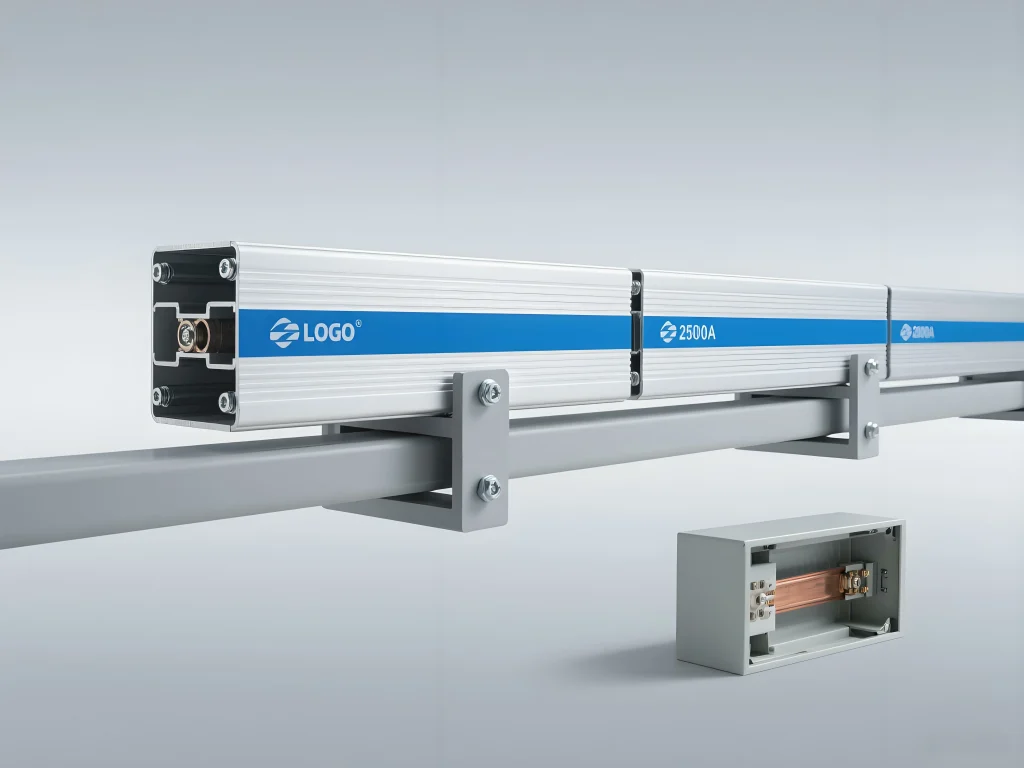1.Why Selecting the Right Busbar Matters
Industrial operations rely heavily on busbar products to ensure safe and efficient power distribution. Learning how to choose the right busbar products—whether copper busbar, aluminum busbar, or insulated busbar—is essential to prevent energy loss, overheating, or costly downtime. Understanding the busbar manufacturing process, material selection, and installation requirements is critical for achieving reliable electrical busbar performance.
2.Definition – What Are Busbar Products?
Busbar components are conductive strips used to distribute electricity in switchgear, control panels, and busbar trunking systems. They vary in material, size, and insulation:
Copper Busbar: High conductivity, ideal for heavy industrial loads.
Aluminum Busbar: Lightweight and cost-effective for moderate currents.
Insulated Busbar: Enhances safety and allows compact installation.
Proper selection ensures energy efficiency, reduces maintenance, and complies with safety regulations.
3.Principle & Process Analysis – How to Select Busbar Products
(1)Assess Electrical Load
Determine maximum continuous and peak currents.
Confirm voltage rating and system configuration (three-phase, neutral, grounding).
(2)Choose Material
Copper: Best for heavy-duty use and high-temperature environments.
Aluminum: Cost-effective, requires larger cross-section for same current.
Insulated: Improves safety and allows tighter spacing in panels.
(3)Determine Size & Cross-Section
Width, thickness, and shape influence resistance, voltage drop, and heat.
Custom solutions optimize space and electrical performance in industrial layouts.
(4)Verify Compliance & Safety Standards
IEC 61439, UL, and CE certifications ensure operational safety.
Insulation ratings must match environmental and voltage requirements.
(5)Consider Customization
Bends, holes, and pre-assembled modules improve installation efficiency.
Multi-layer busbars optimize high-current distribution.
(6)Choose a Reliable Supplier
Verify ISO certification and industry experience.
Check availability, lead times, and post-sale support.
(7)Plan Maintenance
Inspect for corrosion, loose connections, or insulation degradation.
Use thermal imaging to detect hotspots.
4.Comparative Analysis – Material and Application
| Merkmal | Copper Busbar | Aluminum Busbar | Insulated Busbar |
| Conductivity | ★★★★★ | ★★★ | Varies |
| Weight | Heavy | Light | Moderate |
| Cost | High | Low | Moderate |
| Safety | Needs cover | Needs cover | Built-in |
| Typical Application | Heavy industry | Cost-sensitive | Safety-priority |
5.Welleshaft Services, Technology, and Capabilities
1.Technisches Fachwissen: ISO 9001-certified busbar manufacturing und quality control services.
2.Equipment: CNC cutters, automated punching, high-precision CMM, plating lines, insulation coating stations.
3.Custom Solutions: Tailored custom busbar products for factories, data centers, and industrial machinery.
4.Quality Assurance: Compliance with IEC, UL, CE; detailed inspection reports and testing documentation.
6.Team Experience & Certifications
1.8+ years delivering industrial busbar systems globally.
2.ISO 9001 and ISO 14001 certified.
3.Proven record in industrial-grade busbar selection and procurement services.
7.Customer Case Study
1.Challenge: A manufacturing plant required high-current custom busbar solutions for a new production line.
2.Solution: Welleshaft designed insulated copper busbar trunking tailored to equipment layout, completed with full documentation and testing.
3.Outcome: Improved safety, zero installation errors, and optimized current distribution.
8.Anwendungen
1.Manufacturing Plants: Copper busbars for heavy machinery power distribution.
2.Data Centers: Aluminum and insulated busbars for safe, compact installations.
3.Automotive & OEM Factories: Custom solutions matching complex equipment layouts.
4.Renewable Energy: Insulated busbar trunking for safe high-voltage distribution.
9.Frequently Asked Questions
(1)How to select the right busbar products for industrial use?
A: Assess electrical load, material, size, compliance, and environment.
(2)Which materials are best for heavy industrial applications?
A: Copper busbars for high-current use; aluminum for moderate currents.
(3)How does busbar size affect performance?
A: Correct cross-section reduces resistance, voltage drop, and heat buildup.
(4)Can custom busbars improve efficiency?
A: Yes, pre-assembled or multi-layer designs optimize performance and installation.
(5)Where can I find reliable industrial busbar suppliers?
A: Partner with certified manufacturers offering documentation, support, and fast delivery.
10.Why Choose Welleshaft
1.Expert Consultation: Tailored advice for custom busbar solutions.
2.Certified Quality: ISO-certified processes ensuring compliance and reliability.
3.Turnkey Services: From design and selection to delivery and technical support.
4.Durable Products: Designed for harsh industrial environments, minimizing downtime.
Written by a Welle senior electrical engineer with 8+ years of experience in industrial power distribution and busbar system consulting. Our team has delivered customized busbar products und busbar systems for factories, manufacturing plants, and data centers worldwide.

